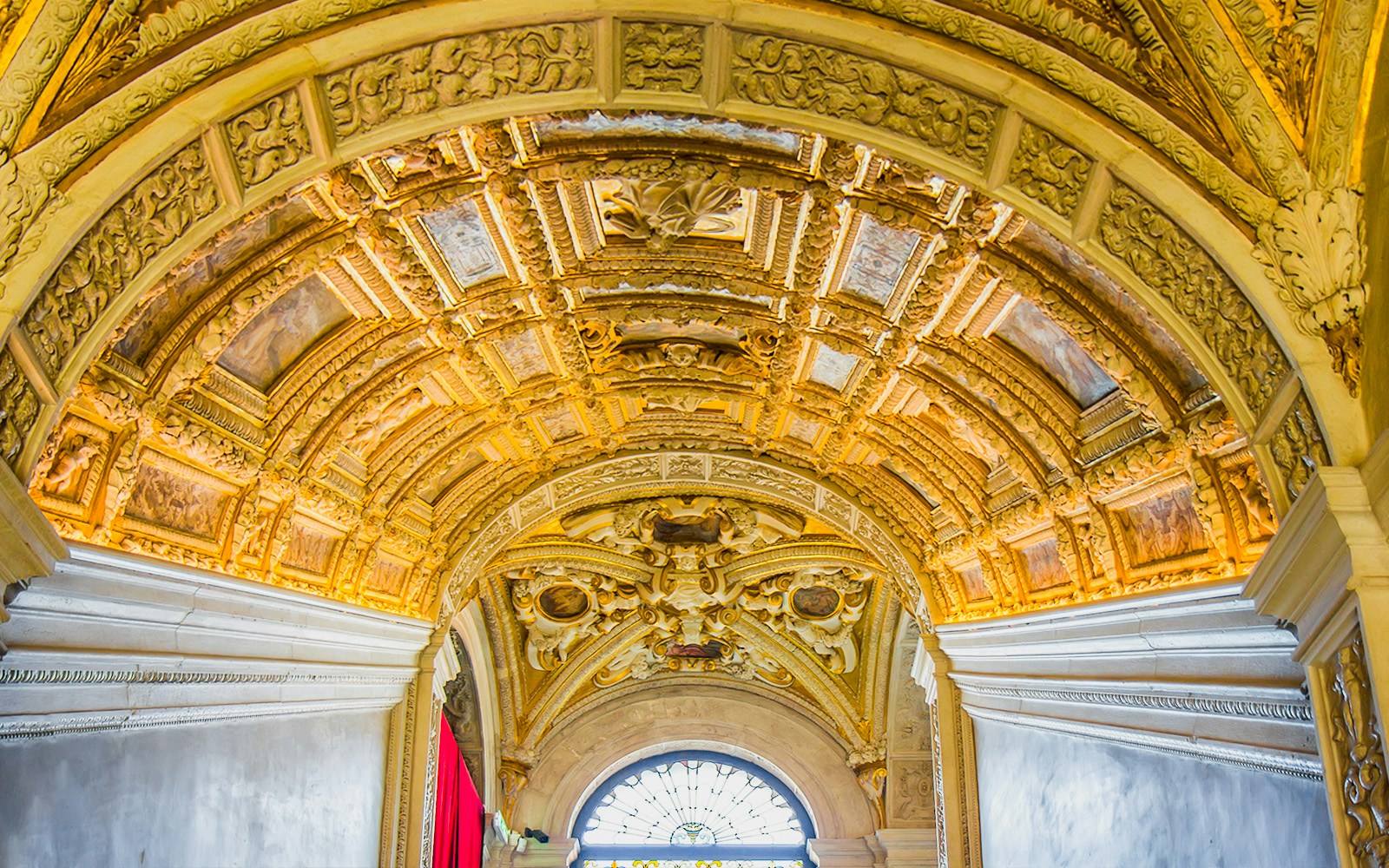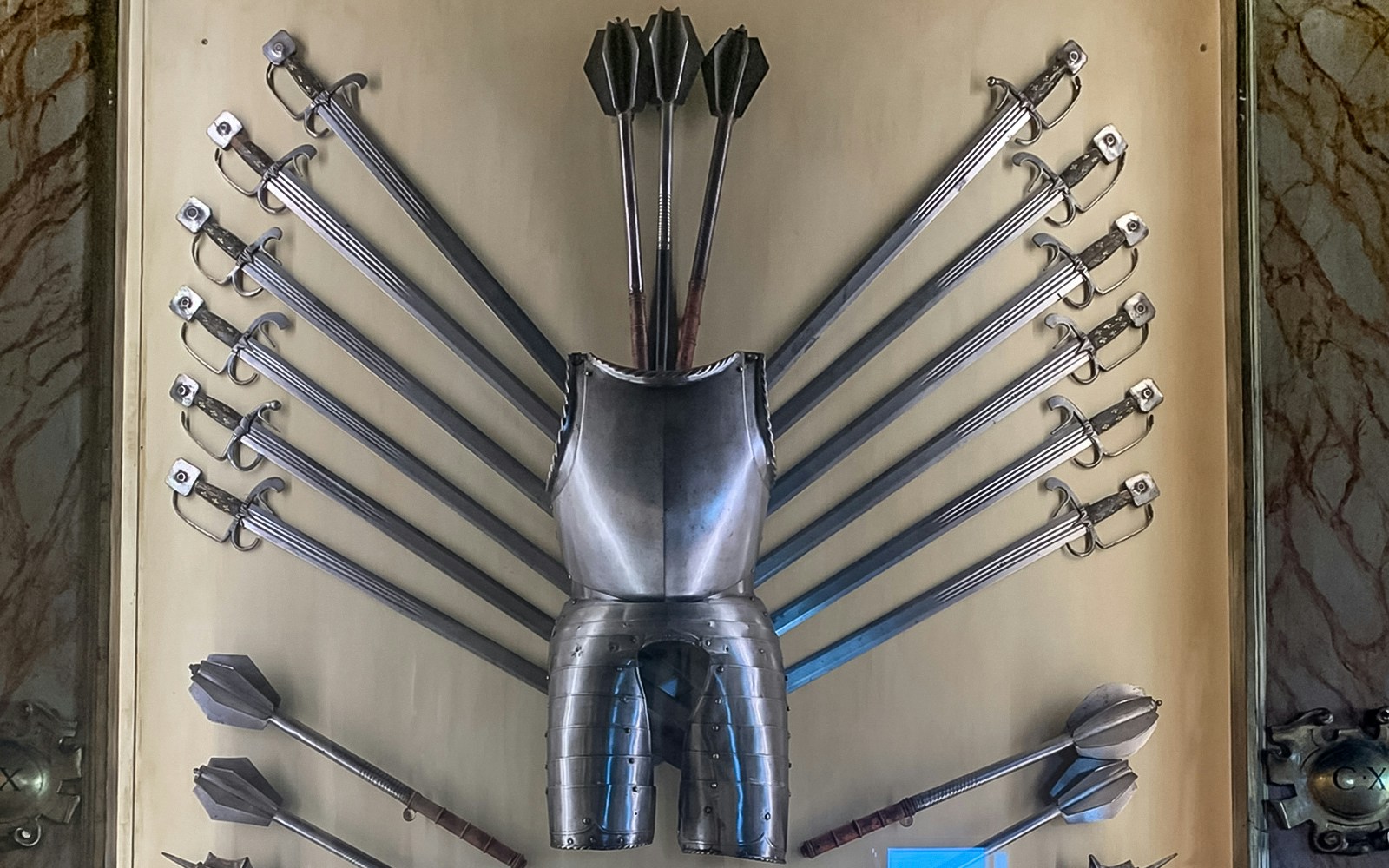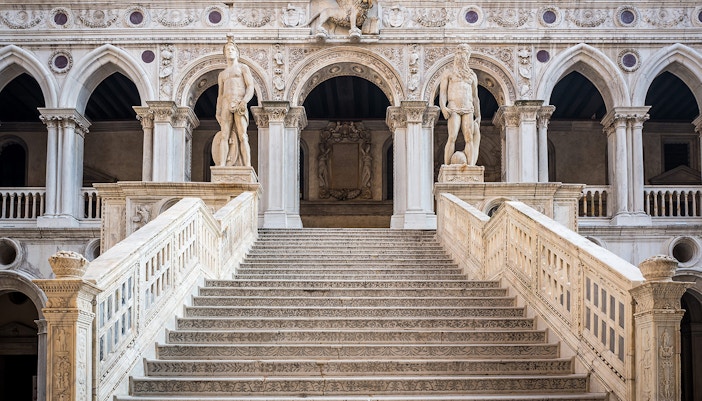The palace is built in the Venetian Gothic style, characterized by the use of pointed arches, ribbed vaults, and ornate decorations. This style was popular in Venice during the 14th to 16th centuries and is seen in many of the city's iconic landmarks.





































